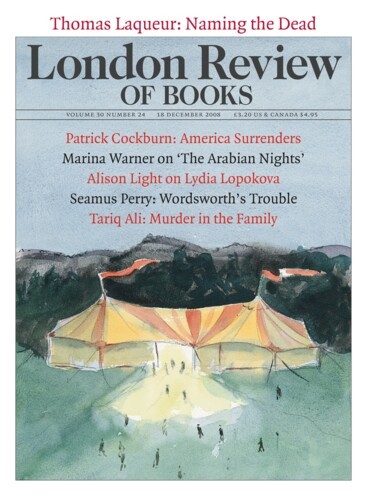When David Wilkie’s ‘Village Politicians’ first appeared at the Royal Academy in 1806 it caused a sensation. Less than ten years after the end of the French Revolution, less than ten years before Waterloo, we find a room of common Scots not only arguing the political toss but represented in a style that seeks neither to caricature them nor to elevate them. ‘Mr Wilkie places nothing more than the truth before us,’ one critic wrote. There are 14 figures in the picture, each with a life of its own, and yet the interior, brown and muddy and variously lit, has a character, too: a habitat but also a living museum of past and present cares. ‘Painting out of the Ordinary: Modernity and the Art of Everyday Life’ (Yale, £45), a wonderful new book by David Solkin, points out that ‘Village Politicians’ not only catches something new in the lives of the people depicted, but that the painting itself constituted something new. ‘All the figures are exhibited as doing something,’ Solkin writes, ‘what is done by each being the different parts of the same action.’ He makes a clear case in the book for the influence of Flemish painters, not only on Wilkie (whose debt to David Teniers was obvious), but on the now less well-known figures of Thomas Heaphy and William Mulready, whose skill in capturing the carnival of British working-class life in a new style of painting was revelatory. The idle maids and delinquent schoolboys in these paintings appear to have feelings, and full interior lives, in a way that none of them was quite seen to have before.
The Wilkie painting was understood, at least in England, to be firing a shot in the ‘epic of common life’: another way of looking at it would be as a radical moment in the story of storytelling. The working class had certainly been figures in ink or paint before Wilkie, but always either as caricatures or as generalised mob-dwellers with commedia dell’arte mannerisms. Some of Wilkie’s figures are indeed comic, but it is a new comedy of recognition, where people seem funny thanks to the vividness with which they appear to be nobody but themselves. Yet they also have dignity and what might be called a moral purpose: they are not the butt of a joke but full participants in a human drama. The man on the extreme left is myopically reading a paper and we immediately grasp (from his posture, from the shape of his mouth) a strong sense of his obliviousness. The man in front of him has an equally expressive form: ‘a form’, as Solkin puts it, ‘that bore the stamp of individual “character”’. His eyes show that he is convinced of his argument as much as he is frustrated by the views of his opponent: he is ready to say something shocking and decisive. The other men are wide-eyed and excited at the developments, sucking in air, we might believe, at the prospect of what is coming next. And the man on the right who holds the paper that must have started the argument is impassive, forbearing, allowing youth to have its say, and in his manner (in his tolerant posture and in his fingers clasping his chin) we might imagine he sees a gloomy inevitability in what the younger man is saying.
One could almost put dialogue to the ‘Village Politicians’, such is the clarity of the dramatis personae. You could say that John Galt did exactly that in his political novels of small-town Scottish life, the most famous of which, ‘Annals of the Parish’, was Coleridge’s favourite novel. But ‘Village Politicians’ is where much of it started, its occupants now part of a world in which politics can break into everyone’s domestic space – the paper in the hand of the passive man would have arrived by the new postal service – and Wilkie’s painting shocked audiences because it appeared to show a new contemporary reality. The Reform Act is 26 years away, but already we see the old world fading.
Send Letters To:
The Editor
London Review of Books,
28 Little Russell Street
London, WC1A 2HN
letters@lrb.co.uk
Please include name, address, and a telephone number.

